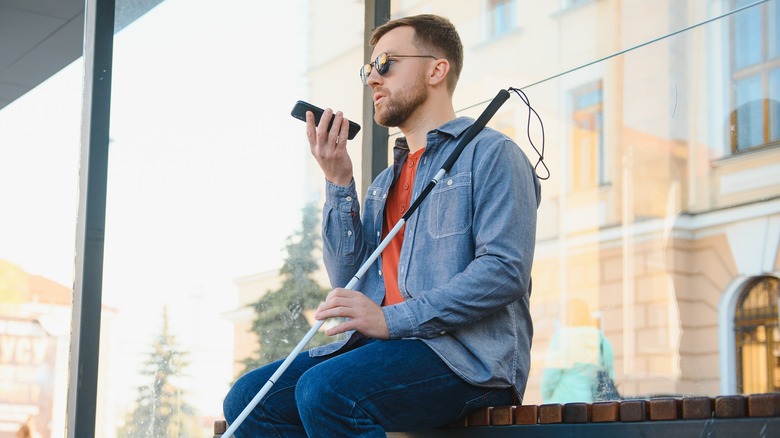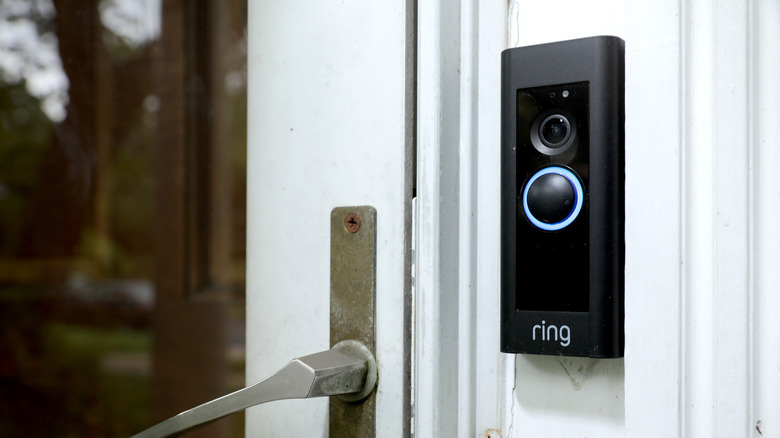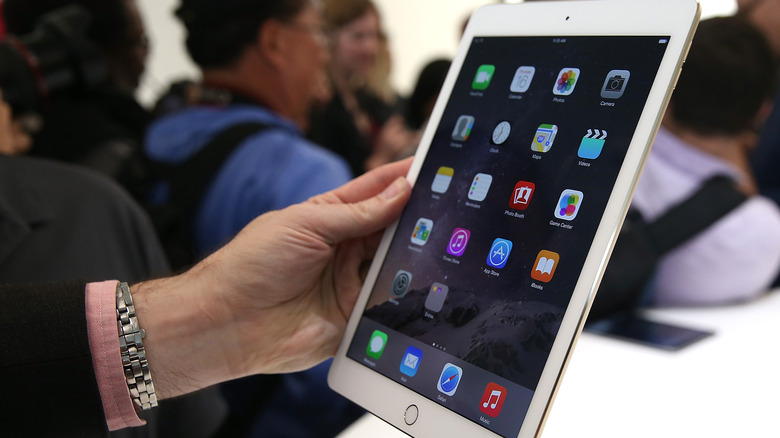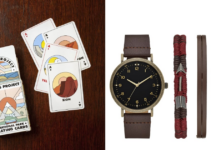
Hryshchyshen Serhii/Shutterstock
We may receive a commission on purchases made from links.
Being visually impaired has always brought forth its fair share of challenges for people. However, those affected have always found ingenious, beautiful ways to make everyday life fairly ordinary. As technology has advanced in the last several years, this has presented those with visual impairments with new challenges that they need to deal with, particularly as the overreliance on screens has become the societal norm. Of course, because of technological innovations, there have also been a plethora of gadgets and devices that have become an incredible asset to the visually impaired community.
Some of these devices are made specifically for those with sight challenges. However, some of them are frequently used by every person, and they might not even know they have significant benefits for those who cannot see well. The five gadgets we are going to mention here fall into both categories and if you are someone out there with vision struggles, you might want to consider picking a few of these up, if not all of them. These aren’t crazy things like using artificial intelligence to restore sight. Just functional, dependable products. Living in the digital world has presented many conveniences to people, which should be extended to everyone.
Ring doorbell

Chip Somodevilla/Getty Images
Ring has become an enormously popular brand in the last few years as a cheaper alternative for a home security system with its video doorbells. The built-in cameras on these devices have captured so many people trying to break into people’s homes or, more commonly, people trying to steal packages from front porches. While these are terrific features that benefit so many, having a camera and a microphone to capture who is at the door can be an incredible asset to someone who can’t see well.
Answering the door for someone with visual impairments or blindness can be a dangerous situation. You are putting a lot of trust in the fact that when you open the door, the person standing there won’t take advantage of your inability to see who it is. By having a microphone built into the Ring doorbell, you can double-check who is at your door by voice before you even get close to opening it up. This is especially helpful for visually impaired children who need to answer the door. Ring wants to make your home a little safer, and this may not even be a way the company imagined the doorbell doing just that.
Amazon Echo Show
Because screens can be an issue for those with problems with sight, using your voice and hearing become two of your biggest strengths. So much of our information and communication today is translated through text, but that can just as easily be done with audio as well. At a baseline, a device every person with visual impairments should have in their stable is some kind of virtual assistant speaker, be it an Amazon Echo with Alexa, a Google Home, or something else. If you need to know the weather or what time it is, want to play a song or ask any question, these devices can do all that and more just through voice commands.
To get specific, the Amazon Echo Show would be the best option for those with visual impairments. You may think that to be odd because this is an Alexa device with a screen when that isn’t really what visually impaired people need. However, the Echo Show is the best option because of one specific feature: Show and Tell. With this feature, you can hold any item up to the camera on the Echo device, and it will tell you what it is. No more are the days of trying to distinguish between two cans in your pantry or being unsure of what something is on your coffee table. The Echo Show has a screen, but the more important hardware is its camera, making Show and Tell possible.
iPad

Justin Sullivan/Getty Images
It is incredibly tough to get through modern life without some sort of smart device, be it a phone or a tablet. It’s the primary way we stay connected to the world and the people in our lives. One problem: these devices are essentially just giant screens. They don’t even really have buttons for people to differentiate through feel. However, Apple has made quite the effort to make portable screens quite friendly to those with various levels of visual impairment.
Depending on how impacted your vision is, having a large iPad screen where text can be a lot larger, and icons spread further apart makes it easier to navigate than something where everything is so close together. Beyond the size of the device, though, are the built-in accessibility features. For instance, there’s VoiceOver, Apple’s screen reader. Not only can it read text on the screen, but it can also do things like tell you how much battery power is left, which app icon your finger is on, and audio notifications for phone calls.
Beyond VoiceOver, iOS also has a feature that speaks aloud the letters and words you type to make sure they are what you want, as well as a speak-to-text feature. For movie watching, you can automatically have on audio description mode for the visuals. Plus, you can change text size and use a magnifier if that’s what you struggle with in your vision. For being a giant screen, an iPad is surprisingly helpful for those who can’t see well.
Hable One
Of course, a large screen is not going to work for everyone with some visual impairments, but that doesn’t change the fact that people today need to be connected through some kind of smart device, especially for communication purposes. One of the biggest roadblocks for visually impaired smartphone users is the buttonless keyboard. Particularly for blind people, having the tactility of buttons and bumps is crucial for them to use, but for things like an iPhone, that just doesn’t exist on the device.
This is where a company like Hable comes in with their product, the Hable One, which is a compact Bluetooth keyboard that connects to your smartphone. This is not a full Qwerty keyboard but a simplified, Braille-inspired keyboard with eight buttons. Because it is more Braille-inspired than actual Braille, this device can also work for visually impaired people who do not know Braille or are learning it. When you purchase a Hable One, it also comes with a 30-minute training course for you to acclimate yourself to the device quickly. The keyboard is also usable by both iOS and Android devices.
Uccello Kettle
Sometimes, the gadgets that can help out those with sight problems do not need to be high-tech products. Sometimes, it can be incredibly simple to help out with one of the most ordinary tasks imaginable: pouring water. Depending on how impacted your vision is, having the spatial capabilities to pour water into a cup can be a challenge, and you find yourself having to clean up spilled liquid more often than you’d like. This can be especially tricky with hot water for tea, and you risk burning yourself.
The Uccello Kettle seeks to eliminate any issues one may have with this task. It is a stationary kettle that simply tilts forward when you want to pour it, safely securing it when you pour. This is a kettle obviously designed to heat up water, but if you so choose, this could just be an efficient, safe pitcher to use as well. You may have thought that there wasn’t an innovation to be made with the task of pouring water into a cup, but you would be wrong.


